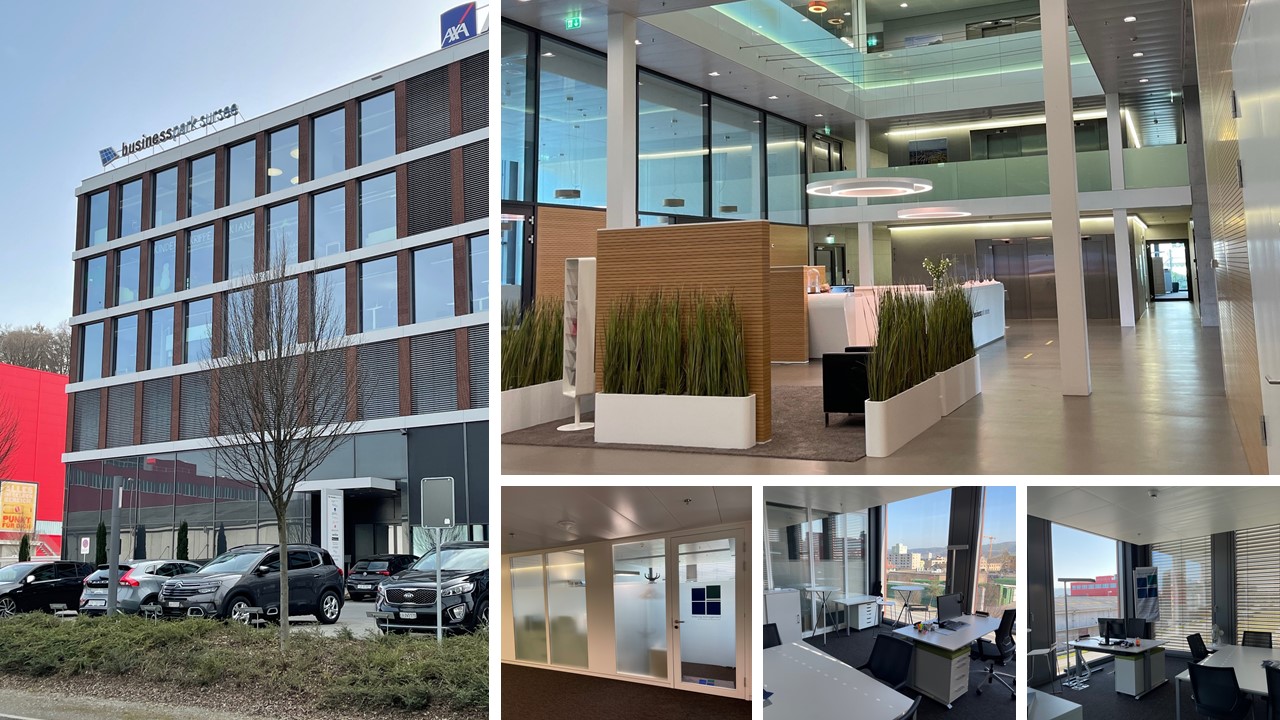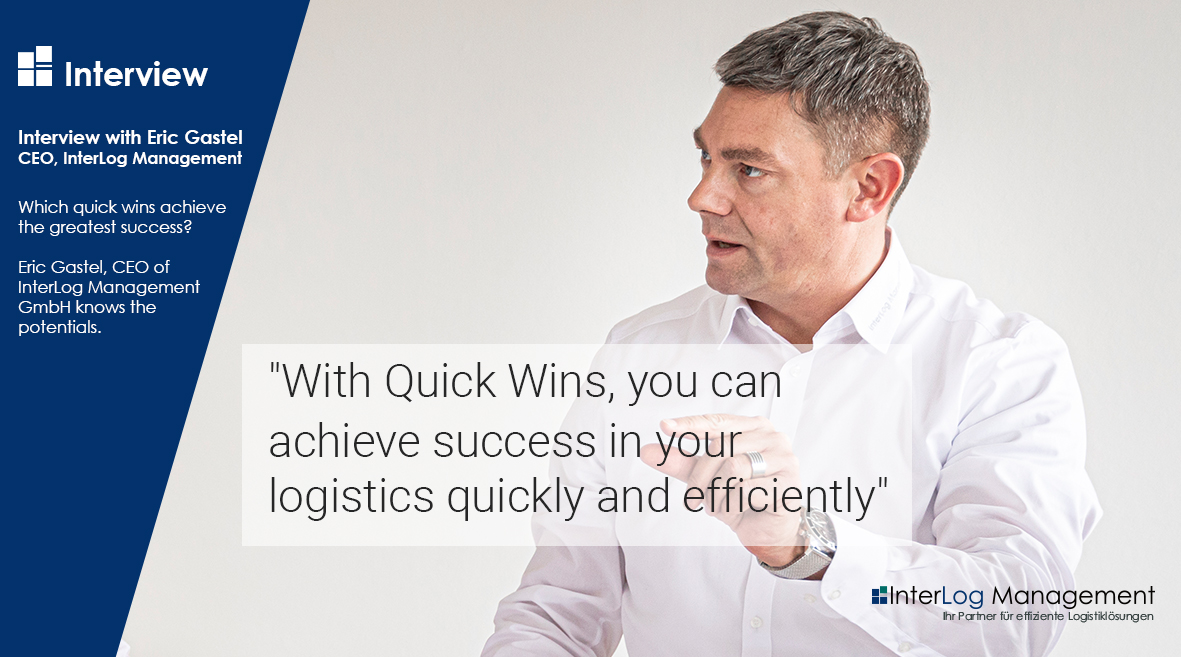Material flow planning in logistics
Optimal planning of all flows of goods and materials is the driver for efficient logistics
Consistent optimisation of all material and goods flows
From material flow analysis and optimisation to realisation in day-to-day operations, we are your partner
Material flow planning includes the planning and design of internal material flows and forms the basis for transparency and efficiency within the processes.
Historically developed processes and ever faster changing market requirements in logistics often make it necessary to revise material and goods flows. Likewise, the planning of new locations may require a new material flow concept. Regardless of the initial situation, a holistic planning approach should always be chosen in order to secure decisive competitive and efficiency advantages. In material flow planning, we include the entire logistics processes, from incoming goods to outgoing goods, as well as the associated infrastructure, space, logistics equipment and future customer requirements. We see material flow planning as a driver for efficient intralogistics. Therefore, material and information flows within logistics should not be neglected under any circumstances. Because this is where it is decided how physical goods movements of any kind can actually be realised and planned and how efficiently goods of the most diverse kinds can be coordinated.
- Many advantages can be achieved with optimised material flow planning
If the material flow is not optimally planned, the entire process chain from goods receipt to goods issue will not function properly either.In order to reduce throughput times, reduce susceptibility to errors, increase efficiency and reduce logistics costs, optimal and well thought-out material flow planning is required. Significant advantages that you can achieve through our material flow planning are:
- Minimisation of transport, storage and handling costs
- Structured and standardised processes
- Optimisation of space requirements
- Shortening of throughput times
- Reduction of the error rate
- Optimisation of stock levels
- Our expertise
We accompany you throughout the entire planning and design of your logistical flow of goods — from material flow analysis, visualisation and concept creation to implementation.
- Material flow design
By using our 3D warehouse simulation, warehouse processes and procedures are dynamically and realistically simulated. Throughput quantities and throughput times can be parameterised according to customer requirements. The planned material flow can be checked in advance for performance limits, disruption scenarios and bottlenecks.
Our established approach to material flow planning
Material flow analysis, material flow simulation and profitability audit as the basis for implementation
- Material flow analysis
The scope of services includes the preparation and determination of all relevant data and processes as a basis for planning. We record all material movements with quantities and frequencies as a Sankey material flow plan or as a material flow matrix. Our process analysis takes into account all main logistics processes, secondary processes and special processes.
- Material flow design
With our 3D simulation software, we visualise your entire intralogistics including the movement of goods. The best possible scenarios and variants can thus be optimally derived and serve as the basis for the development of a material flow concept.
- Cost-benefit analysis
The different solution variants are evaluated with a cost-benefit analysis including a profitability test and serve as a decision-making basis for the subsequent implementation and material flow optimisation.
Material flow planning — efficient and sustainable
Questions and answers about material flow planning
Depending on whether it is an adjustment of the existing material flows or you are planning a new location — the approach is different. However, the logistics key figures and the associated logistics processes always form the basis. In both cases, our approach involves planning and visualisation using our 3D simulation software. This allows us to recreate true-to-scale logistics buildings and facilities in the shortest possible time and simulate material and goods flows in real time.
Optimal material flow planning aims to ensure that goods of various kinds are moved efficiently and in a coordinated manner. Without appropriate material flow planning, your flow of goods and thus your entire process chain from goods receipt to goods issue will not function properly. This sometimes means:
- High transport, storage and handling costs
- High throughput times
- No structured and standardised processe
- High space and capacity requirements
- High susceptibility to errors
A warehouse management system in interaction with a material flow computer and the control system is decisive for the optimal material flow within the logistical processes. The data and information that converge in the material flow computer can be used to visualise the processes with the help of material flow planning and optimise transport routes.
The material flow computer (MFR) communicates between the warehouse management system (WMS) and the control system (PLC) and acts as an information interface for status, capacities and transit times.
The warehouse management system is superordinate to the material flow computer and, among other things, manages the stock, forms picking and replenishment orders, controls goods flow strategies and creates transport orders that are forwarded to the material flow computer. This generates control commands that can be used to control automated systems such as stacker cranes, conveyor technology, stretchers, robots and the like.
Current topics

News
Relocation to the Sursee Business Park (CH)
Our Swiss team has moved. As of now, the Swiss branch of InterLog Management GmbH can be reached at the new company address “Allee 1B (Businesspark Sursee) in 6210 Sursee”! “The Businesspark Sursee offers

Press releases
Quick wins in logistics
How can you increase your process efficiency with hidden quick wins? Interview with Eric Gastel, CEO of the logistics consultancy InterLog Management. Logistics offers numerous optimisation potentials like hardly any other area, since the

References
Detailed concept for process automation [Hans Kupfer & Sohn GmbH & Co. KG]
Food production and especially the production of meat products in Germany are characterised by high competitive pressure as well as high price pressure within the food retail sector. The resulting low profit margins
